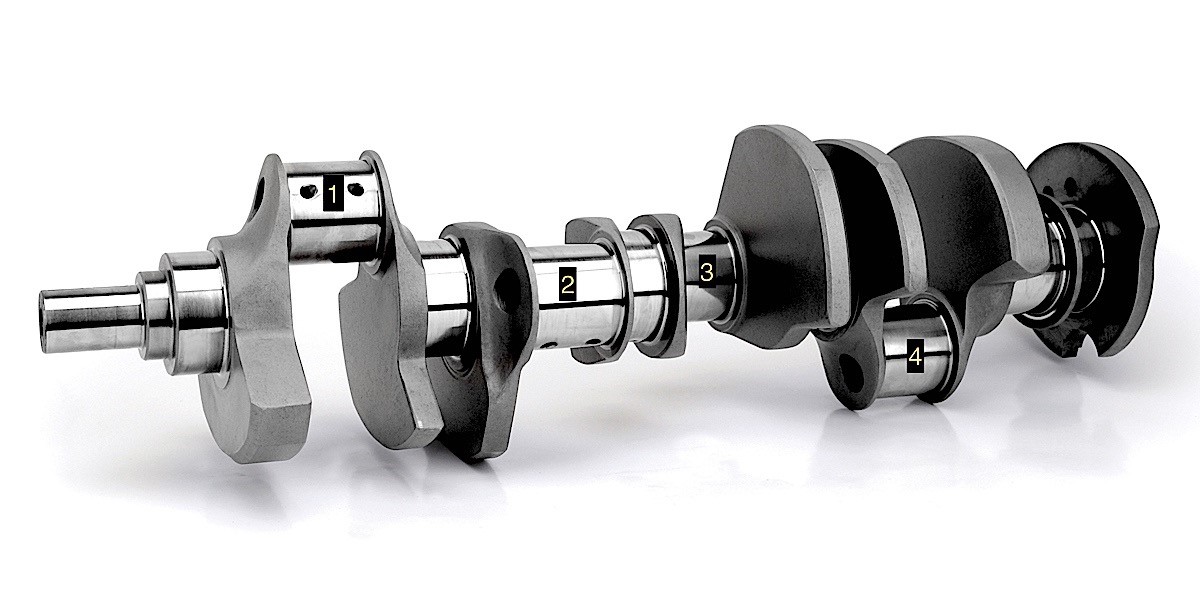
8 CYLINDER V-Engine
What engine is the 8 cylinder V-engine: it is an engine with eight cylinder piston where the cylinders share a common crankshaft and are arranged in a V configuration.
What is the 8 cylinder V-engine displacement: it is in a range between 2926 cc and 8135 cc in recent model line up powertrain.
How much is the power of the 8 cylinder V-engine: the power of the 8 cylinder v-engine is in a range from 125 bhp to 1160 bhp
Which cars use 8 cylinder V-engine: in recent years several manufactures have been used the V8 engine for 3 main applications: premium, sport cars and lightweight trucks. 8 V engine is the American preferred engine for iconic giant pick-up.
What is the eight cylinder V angle: the majority of V8 engines use a V-angle (the angle between the two banks of cylinders) of 90 degrees. This angle results in good engine balance, which results in low vibrations; however, the downside is a larger powertrain body that makes the use of this configuration suitable only for longitudinal position and rear drive wheels traction.
V8 engines with a 60 degree V-angle were used in the 1996–1999 by Ford and in 2005–2011 by Volvo. The Ford engine used a 60 degree V-angle because it was based on a V6 engine with a 60 degree V-angle. Both the Ford and Volvo engines were used in transverse engine chassis, which were designed for a front-wheel-drive layout (with on-demand all-wheel drive system in the case of the Volvos). To reduce the vibrations caused by the unbalanced 60 degree V-angle, the Volvo engines used a balance shaft and offset split crankpins.[3] The Rolls-Royce Meteorite tank engine also used a 60 degree V-angle, since it was derived from the 60 degree V12 Rolls-Royce Meteor which in turn was based on the famous Rolls-Royce Merlin V12 engine.[4]
Most V8 engines fitted to road cars use a cross-plane crankshaft, since this configuration produces less vibration due to the perfect primary balance and secondary balance. The cross-plane crankshaft has the four crank pins (numbered from the front) at angles of 0, 90, 180, and 270 degrees, which results in a cross shape for the crankshaft when it is viewed from one end.
The iconic rumbling exhaust sound produced by a typical cross-plane V8 engine is partly due to the uneven firing order within each of the two banks of four cylinders. A typical firing order of L-R-L-L-R-L-R-R (or R-L-R-R-L-R-L-L) results in uneven intake and exhaust pulse spacing for each bank. When separate exhaust systems are used for each bank of cylinders, this uneven pulsing results in the rumbling sound that is typically associated with V8 engines. However, racing engines seek to avoid these uneven exhaust pressure pulses, to maximize the power output.
Firing order choices in a 90-degree V8 engine are driven by crankshaft design.

This is the standard configuration for almost all V8 engines with a cross-plane crankshaft. The #1 and #4 pins are 180 degrees apart, and the #2 and #3 pins are 180 degrees apart. Some race teams have experimented with swapping the position of the #2 and #3 pins, which would generate different firing order possibilities, but no significant advantage was ever discovered.
What is the firing order of V-8 engine: for V8 engines with cross-plane crankshaft, which phases the connecting rod pins at 90-degree intervals with V angle of 90-degrees, there are several possible firing-order combinations for V8 engine and most used with left-bank forward are:
Chrysler 5.2 V-8 / GM 5.7 V-8 / Ford 7.5 V8
1-8-4-3-6-5-7-2
Audi 4.2 V-8 / Toyota 4.6 V-8
1-8-7-3-6-5-4-2
Ford 5.4 V-8
1-8-7-2-6-5-4-3
Source:
https://en.wikipedia.org/wiki/V8_engine
https://www.enginelabs.com/engine-tech/engine/firing-order-swaps-whats-best-for-your-engine/
https://ricksfreeautorepairadvice.com/category/repair-topics/ignition/firing-order-diagrams/
edited by arrabbiata